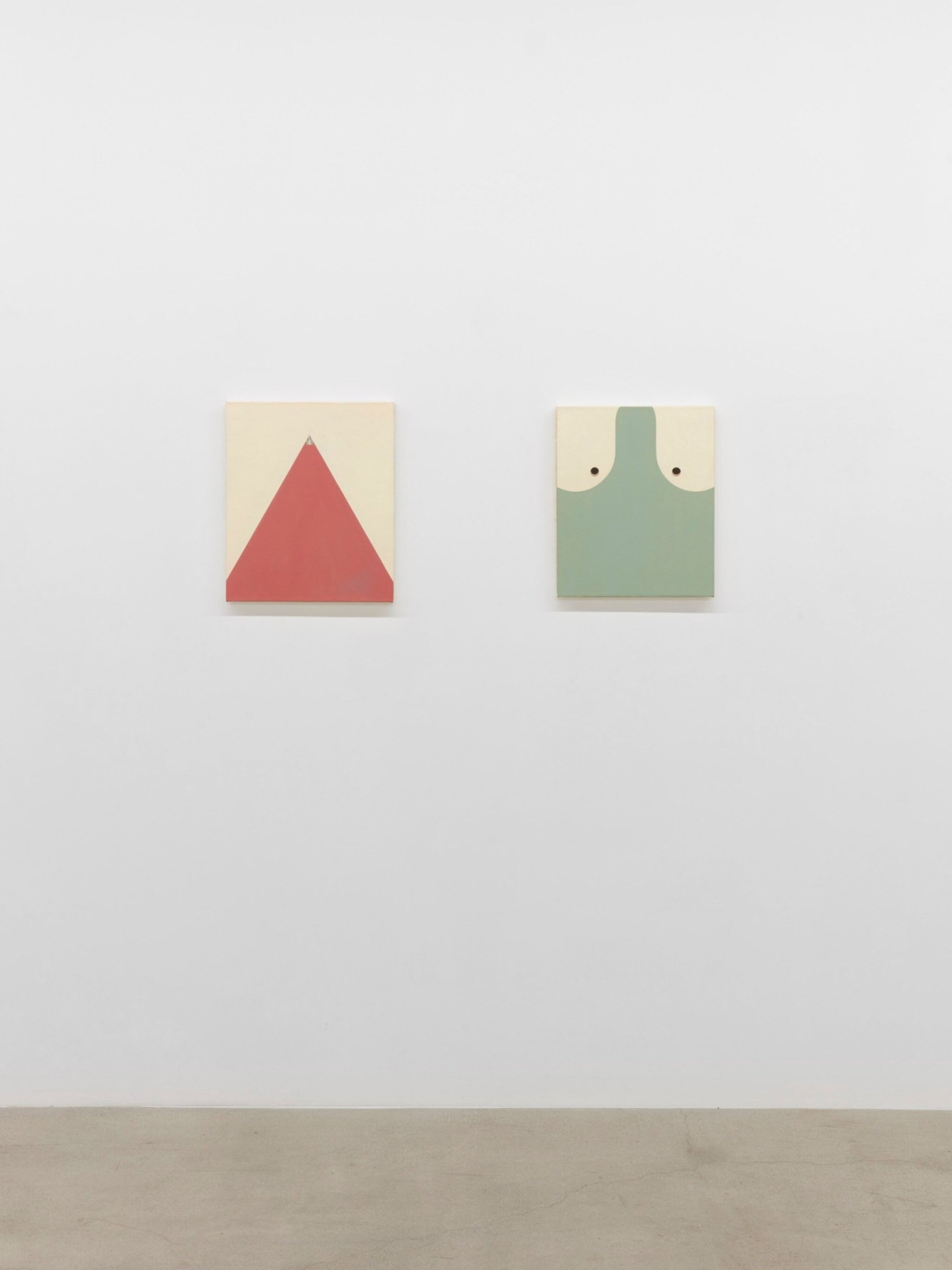I Feel a Voluptuousness
Essay from the catalogue for Alice Tippit: Still Life with Volcano at Grice Bench, Los Angeles, November 16, 2019 - January 25, 2020.
Catalogue features “The Solemn, Torrid Symbol: the Paintings of Alice Tippit,” by Naomi Fry; “I Feel a Voluptuousness,” by Jeanne Dreskin; and color plates of Tippit’s work.
From the essay:
Like most archetypal graphic symbols, the symmetry and centrality of Tippit’s imagery triggers flashes of implicit recognition. As a viewer’s gaze lingers, however, each canvas sharply curtails any stability of meaning. This becomes especially salient when the artist effects biomorphic forms that can be coded as corporeal and female. Take, for instance, the pendulous, breast-like swoops in Loose, the doll-like feet of While, or the hips and oft-maligned “thigh gap” from Cinch. As we sustain our looks, these elements begin to shape-shift. Loose offers not nipples but sockets, subsumed into an impenetrable mask. The legs in While coalesce into a negatory “X.” The neatly contained pelvis in Cinch throws up a fluorescent warning sign. If “it is illusory to think that women can remain outside of the patriarchal system of language,” then Tippit’s work exposes that system’s workings, constantly pivoting around determinate signification. [1]
Beginning in the mid-twentieth century, Pop art cemented its own contributions to this system, often negotiating women’s bodies as signs. As Martha Rosler observed, it “deconstructed and reconstructed [them] as a series of fascinating fields of view...assimilated to the desire attached to the publicized commodity.” [2] With its distilled chromatic spaces and voluptuous anatomies, Tippit’s imagery echoes some of Pop’s characteristic tropes. Yet, it wrangles these tropes away from their essentialist roots, redeploying them to refuse the jubilant “easy read” of Pop iconography. For example, in Boss, two seamlessly joined cherry-red lips obstinately purse themselves before a camel-colored background. Recalling surrealist sofas and Warhol’s iterations of Marilyn Monroe’s mouth, these lips transcend the spatiality of their surroundings. However, upon further examining Boss, the signified concept “lips” becomes superseded by “eyes.” The two white dots of reflection form colorless irises and the Cupid’s bow morphs into a furrowed brow. The desirous gaze is returned in effortless deadpan.
[1] Nancy N. Chen, “‘Speaking Nearby’: A Conversation with Trinh T. Minh-ha,” Visual Anthropology Review 8, No. 1 (Spring 1992): 86.
[2] Martha Rosler, “The Figure of the Artist, the Figure of the Woman,” in Decoys and Disruptions: Selected Writings, 1975-2001 (Cambridge, MA: MIT Press, 2004), 100. Rosler’s own Semiotics of the Kitchen (1975) famously renegotiated these concepts, locating a host of unstable signifiers in the most conventionally “feminine” of domestic spaces.
